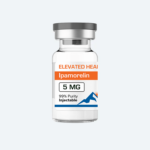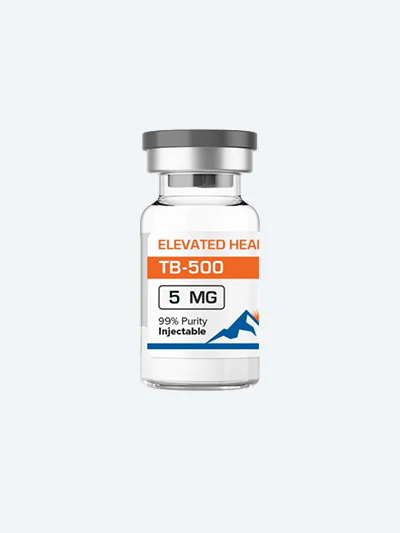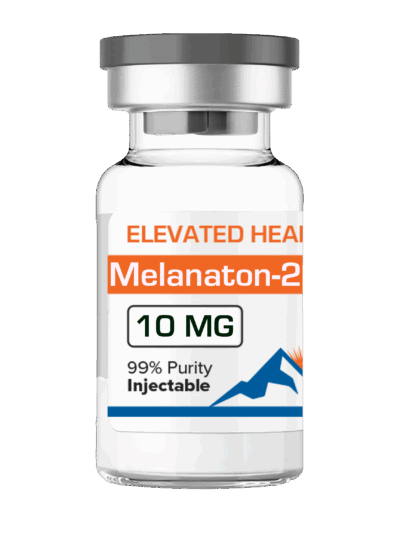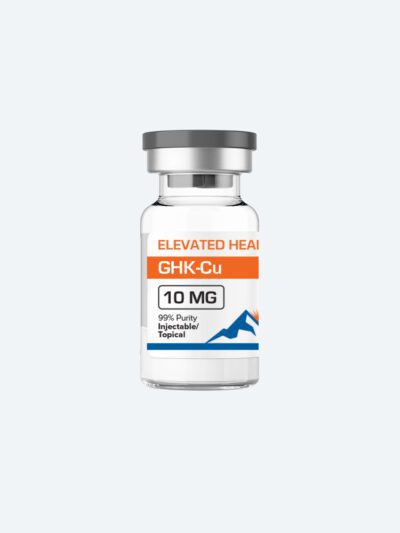No products in the cart.
Back

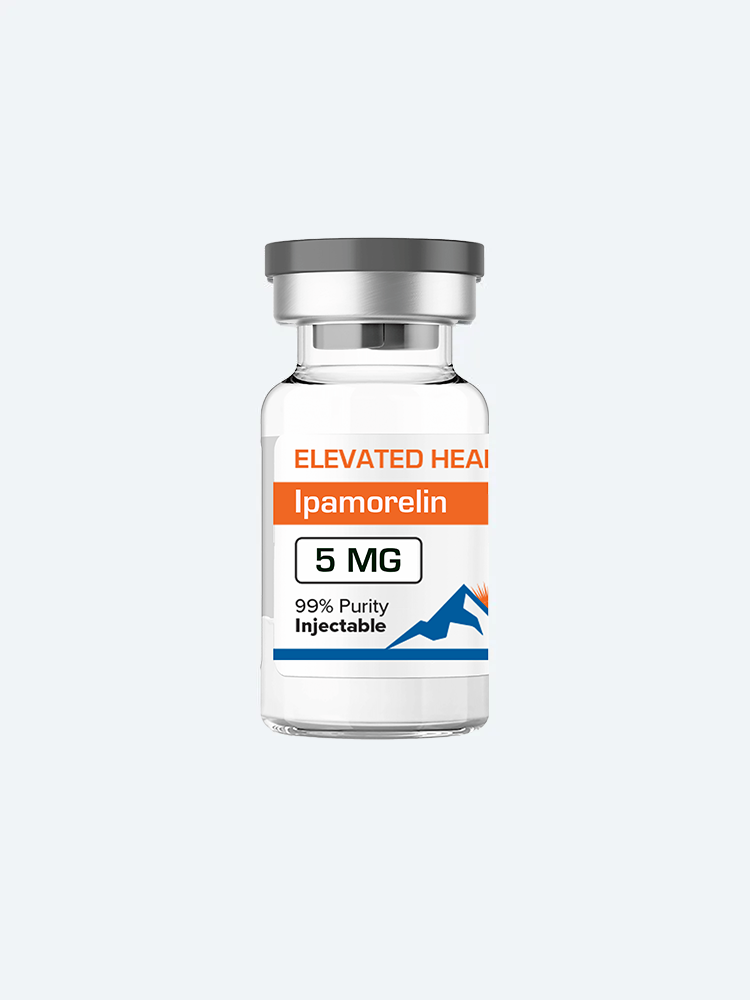
Available on backorder
Ipamorelin
Men's Health, Peptides$60.00
SKU: 29045-SB-9-48
5 mg Injectable
Ingredients – 5 mg Ipamorelin – Growth Hormone Releasing Peptide
Indications – anti-aging, muscle growth, injury recovery
Dosage – 200mcg via injection
Ipamorelin is a lab-made compound known as a growth hormone releasing peptide. It is one of the most selective growth hormone (GH) secretagogues known and has been shown in laboratory studies to have no effect on ACTH, prolactin, follicle-stimulating hormone, luteinizing hormone, thyroid-stimulating hormone, or cortisol release It stimulates the body to release growth hormone, which promotes the systemic growth of muscle, bone, vasculature, and other cells and body tissues. By increasing growth hormone levels, Ipamorelin supports the body’s natural ability to heal, recover, and maintain optimal health.
Ipamorelin works by blocking the inhibitory pathways that prevent GH release, allowing for an increase in growth hormone levels that can significantly improve various aspects of health. With a half-life of two hours, Ipamorelin provides a sustained release of growth hormone, leading to benefits like enhanced muscle recovery, anti-aging effects, and protection from stress. Whether you’re seeking to improve your physical performance, reduce signs of aging, or boost your energy levels, Ipamorelin treatment can help you achieve your health and wellness goals.
- Description
Overview
Ipamorelin is synthetic, and composed of five amino acids. Its amino acid structure is as follows: H-Aib-His-D-2Nal-D-Phe-Lys-NH2, and its chemical structure is C38H49N9O5. Ipamorelin stimulates the pituitary gland to release growth hormone, which encourages cell and tissue proliferation. Ipamorelin acts much like the hormone ghrelin, which also stimulates growth hormone.
People using Ipamorelin experience benefits such as reduced anxiety, enhanced muscle growth, improved bone density, and better protection against stress and fatigue. Ipamorelin is also neuroprotective, meaning it helps protect the brain from damage and can be useful in treating conditions such as arthritis, chronic respiratory disease, and even viral infections.
As a ghrelin mimetic, ipamorelin binds to ghrelin receptors in the pituitary gland and stimulates the release of an intermediary hormone, growth hormone stimulating hormone. Growth hormone stimulating hormone then signals for growth hormone to be released.
However, ipamorelin has a distinct advantage over other ghrelin mimetics. While others also activate the body’s stress response, causing a number of other physical and biochemical changes in the body, ipamorelin is extremely targeted. It does not appear to activate the stress response, making it more of a “pure” growth hormone releasing peptide.
Ipamorelin is a unique GHRP that mimics the action of ghrelin, a hormone produced in the stomach that stimulates hunger and growth hormone release. By stimulating the release of growth hormone-releasing hormone (GHRH) from the anterior pituitary gland, Ipamorelin triggers the release of GH from somatotrophs, allowing for increased production of growth hormone. This peptide not only promotes the release of GH but also blocks the inhibitory pathways that would otherwise prevent GH release. This dual action makes Ipamorelin highly effective in increasing growth hormone levels naturally, without causing unwanted spikes in other hormones like cortisol or prolactin.
Ipamorelin and Bone Tissue
Ipamorelin may positively influence bone mineral density. The theory posits that Ipamorelin might stimulate osteoblasts (cells responsible for bone formation) via hGH-mediated mechanisms, potentially leading to their enhanced proliferation, growth, and specialization. In a particular study, murine models were exposed to either Ipamorelin or a placebo. The impact of Ipamorelin on bone mineral density in these mice was monitored closely through real-time dual X-ray absorptiometry (DEXA) assessments at critical sites, including the femur and L6 vertebra. Post-experiment, the femur bones were further examined using mid-diaphyseal peripheral quantitative computed tomography (pQCT) scans.
Preliminary findings implied that the peptide may have contributed to increased body mass and a probable elevation in the overall tibial and vertebral BMC (bone mineral content) as detected by DEXA compared to the placebo group. Further, the pQCT data appeared to suggest that the observed augmentation in cortical BMC may have stemmed from an enlargement in the cross-sectional area of the bone. In contrast, the cortical volumetric bone mineral density (BMD, which denotes the ratio of BMC to area) appeared to remain steady. Thus, there may have been an enlargement in the volumes of the femur and the L6 vertebrae since BMC appeared to increase while the volumetric BMDs appeared unchanged.
Ipamorelin and Appetite
The potential actions of Ipamorelin on ghrelin receptors may lead to an enhancement in hunger signals and, perhaps, an ensuing augmentation in body mass. Research suggests that research models exposed to Ipamorelin were observed to sustain an estimated 15% surge in body weight. Researchers speculate that this substance might have led to a proportional increase in the weight of fat pads in comparison to the total body weight. Consequently, DEXA scans might indicate a comparative rise in body fat percentage. Moreover, there is speculation among researchers that Ipamorelin might elevate serum leptin levels, a hormone considered to play a crucial role in energy balance and hunger regulation. This observation has prompted scientists to consider increased food consumption as a potential contributor to the weight gain noted in research models exposed to Ipamorelin. They have posited that “GHSs increase body fat by GH-independent mechanisms that may include increased feeding.”
Ipamorelin and Nitrogen Balance
Researchers have suggested that Ipamorelin may potentially mediate anabolic action, which may be due to its potential in hGH and IGF-1 synthesis and may be assessed through its impact on nitrogen balance. In a distinct investigation, researchers aimed to explore the action of Ipamorelin on specific liver markers associated with alpha-amino-nitrogen conversion during induced catabolic states. The study focused on the liver’s capacity to synthesize urea-N (CUNS), which may serve as an indicator of the organ’s ability to process nitrogen. The levels of messenger RNA (mRNA) related to liver urea cycle enzymes were scrutinized, alongside an assessment of the overall nitrogen balance and a hypothesis regarding nitrogen distribution across various organs.
The findings suggested that Ipamorelin might have contributed to a possible 20% reduction in CUNS compared to the artificially induced catabolic condition. Furthermore, it might have diminished the expression of urea cycle enzymes, possibly restored nitrogen balance, and, in theory, altered or improved nitrogen concentrations in different organs.
References
- K. Raun et al., Ipamorelin, the first selective growth hormone secretagogue, Endocrinology, November 1998.
- Sinha DK, Balasubramanian A, Tatem AJ, Rivera-Mirabal J, Yu J, Kovac J, Pastuszak AW, Lipshultz LI. Beyond the androgen receptor: the role of growth hormone secretagogues in the modern management of body composition in hypogonadal males. Transl Androl Urol. 2020 Mar;9(Suppl 2):S149-S159. doi: 10.21037/tau.2019.11.30. PMID: 32257855; PMCID: PMC7108996 https://www.ncbi.nlm.nih.gov/pmc/articles/PMC7108996/
- Jiménez-Reina, L., Cañete, R., de la Torre, M. J., & Bernal, G. (2002). Influence of chronic treatment with the growth hormone secretagogue Ipamorelin, in young female rats: somatotroph response in vitro. Histology and histopathology, 17(3), 707–714. https://doi.org/10.14670/HH-17.707
- Gobburu, J.V.S., Agersø, H., Jusko, W.J. et al. Pharmacokinetic-Pharmacodynamic Modeling of Ipamorelin, a Growth Hormone Releasing Peptide, in Human Volunteers. Pharm Res 16, 1412–1416 (1999).
- Svensson, J., Lall, S., Dickson, S. L., Bengtsson, B. A., Rømer, J., Ahnfelt-Rønne, I., Ohlsson, C., & Jansson, J. O. (2000). The GH secretagogues ipamorelin and GH-releasing peptide-6 increase bone mineral content in adult female rats. The Journal of endocrinology, 165(3), 569–577. https://doi.org/10.1677/joe.0.1650569
- Greenwood-Van Meerveld, B., Tyler, K., Mohammadi, E., & Pietra, C. (2012). Efficacy of ipamorelin, a ghrelin mimetic, on gastric dysmotility in a rodent model of postoperative ileus. Journal of experimental pharmacology, 4, 149–155. https://doi.org/10.2147/JEP.S35396
- Lall, S., Tung, L. Y., Ohlsson, C., Jansson, J. O., & Dickson, S. L. (2001). Growth hormone (GH)-independent stimulation of adiposity by GH secretagogues. Biochemical and biophysical research communications, 280(1), 132–138. https://doi.org/10.1006/bbrc.2000.4065
- Aagaard, N. K., Grøfte, T., Greisen, J., Malmlöf, K., Johansen, P. B., Grønbaek, H., Ørskov, H., Tygstrup, N., & Vilstrup, H. (2009). Growth hormone and growth hormone secretagogue effects on nitrogen balance and urea synthesis in steroid treated rats. Growth hormone & IGF research: official journal of the Growth Hormone Research Society and the International IGF Research Society, 19(5), 426–431. https://doi.org/10.1016/j.ghir.2009.01.001
- N Mohammadi E, Louwies T, Pietra C, Northrup SR, Greenwood-Van Meerveld B. Attenuation of Visceral and Somatic Nociception by Ghrelin Mimetics. J Exp Pharmacol. 2020;12:267-274. Published 2020 Aug 5. doi:10.2147/JEP.S249747
- National Center for Biotechnology Information. PubChem Compound Summary for CID 9831659, Ipamorelin. https://pubchem.ncbi.nlm.nih.gov/compound/Ipamorelin. Accessed Oct. 12, 2021.
- Raun K, Hansen BS, Johansen NL, et al. Ipamorelin, the first selective growth hormone secretagogue. Eur J Endocrinol. 1998;139(5):552-561. doi:10.1530/eje.0.1390552
- Andersen NB, Malmlöf K, Johansen PB, Andreassen TT, Ørtoft G, Oxlund H. The growth hormone secretagogue ipamorelin counteracts glucocorticoid-induced decrease in bone formation of adult rats. Growth Horm IGF Res. 2001;11(5):266-272. doi:10.1054/ghir.2001.0239
- Svensson J, Lall S, Dickson SL, et al. The GH secretagogues ipamorelin and GH-releasing peptide-6 increase bone mineral content in adult female rats. J Endocrinol. 2000;165(3):569-577. doi:10.1677/joe.0.1650569
- Johansen PB, Nowak J, Skjaerbaek C, et al. Ipamorelin, a new growth-hormone-releasing peptide, induces longitudinal bone growth in rats. Growth Horm IGF Res. 1999;9(2):106-113. doi:10.1054/ghir.1999.9998
- Greenwood-Van Meerveld B, Tyler K, Mohammadi E, Pietra C. Efficacy of ipamorelin, a ghrelin mimetic, on gastric dysmotility in a rodent model of postoperative ileus. J Exp Pharmacol. 2012;4:149-155. Published 2012 Oct 19. doi:10.2147/JEP.S35396
- Wang J, He L, Huwatibieke B, et al. Ghrelin Stimulates Endothelial Cells Angiogenesis through Extracellular Regulated Protein Kinases (ERK) Signaling Pathway. Int J Mol Sci. 2018;19(9):2530. Published 2018 Aug 26. doi:10.3390/ijms19092530
- Liang ZT, Li J, Rong R, et al. Ghrelin up-regulates cartilage-specific genes via the ERK/STAT3 pathway in chondrocytes of patients with adolescent idiopathic scoliosis. Biochem Biophys Res Commun. 2019;518(2):259-265. doi:10.1016/j.bbrc.2019.08.044
- Fan L, Chen J, Tao Y, et al. Enhancement of the chondrogenic differentiation of mesenchymal stem cells and cartilage repair by ghrelin. J Orthop Res. 2019;37(6):1387-1397. doi:10.1002/jor.24224
- Mericq V, Cassorla F, Salazar T, et al. Effects of eight months treatment with graded doses of a growth hormone (GH)-releasing peptide in GH-deficient children. J Clin Endocrinol Metab. 1998;83(7):2355-2360. doi:10.1210/jcem.83.7.4969
- Bowers CY, Reynolds GA, Durham D, Barrera CM, Pezzoli SS, Thorner MO. Growth hormone (GH)-releasing peptide stimulates GH release in normal men and acts synergistically with GH-releasing hormone. J Clin Endocrinol Metab. 1990;70(4):975-982. doi:10.1210/jcem-70-4-975
- Laferrère B, Abraham C, Russell CD, Bowers CY. Growth hormone releasing peptide-2 (GHRP-2), like ghrelin, increases food intake in healthy men. J Clin Endocrinol Metab. 2005;90(2):611-614. doi:10.1210/jc.2004-1719
- Berlanga-Acosta J, Abreu-Cruz A, Herrera DGB, et al. Synthetic Growth Hormone-Releasing Peptides (GHRPs): A Historical Appraisal of the Evidences Supporting Their Cytoprotective Effects. Clin Med Insights Cardiol. 2017;11:1179546817694558. Published 2017 Mar 2. doi:10.1177/1179546817694558
- World Anti-Doping Agency. World Anti-Doping Code International Standard Prohibited List 2022. WADA website. January 1, 2022. Accessed Mar 2022. https://www.wada-ama.org/sites/default/files/resources/files/2022list_final_en.pdf
REMINDER TO ALL CUSTOMERS:
Due to their sensitive nature and strict storage requirements: all sales are final on peptides & GH products. We cannot accept returns strictly because of product integrity and safety for all clients. Thank you for your understanding
Related products
- TB-500, 5mg, 3 Pack
$240.00Original price was: $240.00.$216.00Current price is: $216.00. - Melanotan-2$50.00
- GHK-Cu, 50mg - 3 Pack
$210.00Original price was: $210.00.$189.00Current price is: $189.00.


